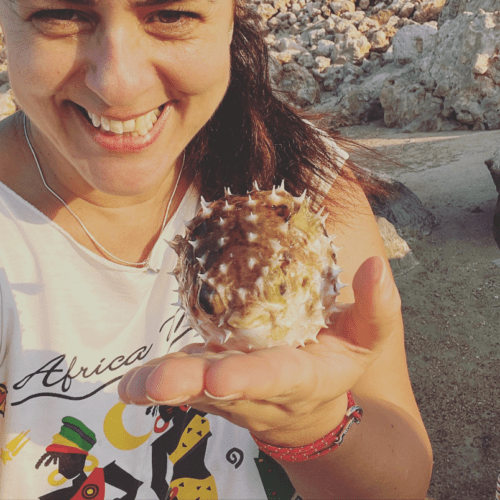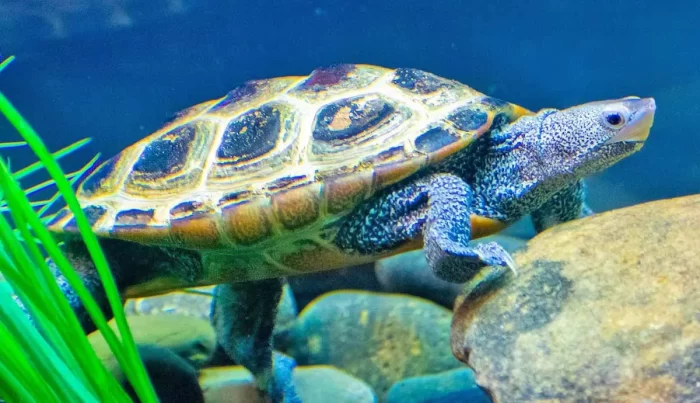Welcoming a turtle into your home is an exciting endeavor that comes with great responsibility. Turtles have very specific care requirements, so their habitat needs to be set up properly right from the start. An ideal turtle tank has clean water, adequate space, a heat gradient, UVB lighting, and enrichment. In this article we talk about 10 Tips for Setting Up a Turtle Tank In 2024.
Follow this complete guide to learn the key steps for constructing a thriving turtle habitat.
Table of Contents
Choose an Appropriately Sized Turtle Tank
One of the most common turtle care mistakes is housing them in tanks that are too small. Turtles grow continuously throughout their lives and require ample room to swim and explore.
As a general rule of thumb, you should provide at least 10 gallons of water for every inch of your turtle’s shell length. For example, a 4-inch turtle needs a minimum 40-gallon tank. If keeping multiple turtles, increase the tank size accordingly to prevent territorial disputes.
Ideally, choose the largest tank size possible to accommodate your turtle as it grows. Prioritize floor space over height since turtles spend most of their time swimming on the bottom surface.
Select a Sturdy Turtle Tank Stand
It’s critical to set up your turtle habitat on a stand specifically designed to hold heavy aquariums. Water weighs over 8 pounds per gallon, so even relatively small turtle tanks become tremendously heavy.
Construct turtle tank stands out of solid wood or steel frames for maximum strength and stability. Position stands securely on level surfaces to prevent accidents and injuries. Remember that both turtles and glass are fragile when falling.
Install High-Quality Turtle Tank Filtration
Turtles are incredibly messy animals that produce copious amounts of waste, so filtration is vital for maintaining safe water quality.
Canister filters provide the most effective and convenient filtration method for turtle habitats. Choose a canister filter rated for at least twice the volume of your turtle tank. This overfiltering helps prevent the accumulation of harmful nitrogenous toxins.
Combine the canister filter with a water pump to keep water circulating continuously. This prevents stagnant zones where waste can accumulate.
Maintain Proper Turtle Tank Water Conditions
In addition to strong filtration, monitoring and adjusting water conditions are crucial for turtle health. Use liquid test kits to check levels of chlorine, ammonia, nitrites, nitrates, pH, hardness, and alkalinity.
Perform partial water changes whenever toxin levels exceed the following thresholds:
- Ammonia and Chlorine: 0 ppm
- Nitrites: Less than 0.5 ppm
- Nitrates: Less than 50 ppm
Use water conditioners to neutralize chlorine and chloramines whenever replacing tank water. Avoid using distilled water which lacks essential minerals for proper turtle nutrition and shell growth.
Provide Proper Turtle Tank Heating
As ectotherms, turtles rely on external heat to regulate their body temperature and digestion. Use submersible aquarium heaters to maintain a water temperature between 75-80°F.
Additionally, turtles require basking areas to warm themselves 10-15°F above the water temperature. Position basking platforms under heat lamps and measure temperatures with a thermometer.
Use a thermostat or rheostat to adjust heat lamp intensity in order to stabilize the temperature of basking zones. Avoid overheating since temperatures over 85°F can cause fatal heat stress in turtles.
Install Appropriate Turtle Tank Lighting
In addition to heat lamps for basking, turtles need UVA/UVB full spectrum lighting over their habitats to synthesize vitamin D3. Without UVB exposure, turtles develop metabolic bone disease and shell abnormalities.
Choose a Reptisun 10.0 or Arcadia 12% bulb within 10-12 inches from where your turtle basks. Replace UV bulbs every 6 months since their UV output declines over time.
Use timers to provide 10-14 hours of daytime light and 10-14 hours of darkness. Exposure to light at night can disrupt healthy circadian rhythms.
Select Safe Turtle Tank Substrates
The substrate at the bottom of the turtle tank should be non-abrasive and ingestion-proof. Smooth stones, very large gravel, and bare glass bottoms make suitable options. Sand compacts easily and can cause impaction if swallowed.
Avoid using loose substrates like bark, moss or shredded paper which can trap food and fecal matter. Over time, debris accumulation creates hotbeds for dangerous bacteria and fungi.
Include Turtle Tank Decor and Hiding Spots
Although primarily aquatic, turtles appreciate having a dry refuge to bask and feel secure. Provide a completely dry land section equipped with hiding caves and shelters.
Additionally, incorporate smooth aquarium-safe rocks, logs, live plants and other decorations to enrich the underwater area. Ensure the decor has no dangerous edges or small pieces that could trap or harm your turtle.
Feed Your Turtle in a Separate Container
Turtles are very messy eaters that release food particles everywhere as they tear and bite. To help maintain tank cleanliness, place your turtle into a separate plastic bin for feeding times.
Provide a variety of greens and vegetables in combination with high quality commercial turtle diets. Only keep food in the tank for 1 hour maximum since decaying food drastically reduces water quality.
Perform Routine Turtle Tank Maintenance
Even will a well-designed habitat, turtles produce waste that accumulates over time. Set up a weekly routine for testing water parameters, siphoning debris from the substrate, wiping down glass walls, and trimming plants.
During monthly partial water changes, use a soft toothbrush or sponge designated for aquarium use only to gently clean the turtle’s shell free of algae buildup. Avoid using soap or detergent which removes their protective mucus layer.
Follow these crucial steps for constructing an optimal habitat, and your turtle will thrive for decades to come. I sincerely hope you find this “10 Tips for Setting Up a Turtle Tank In 2024” article helpful.

Marta, the driving force behind WaterWorldCraze.com, holds a Master’s degree in Marine Biology and has extensive experience in water sports and activities. With over 7+ years of hands-on experience in marine research and conservation, she has participated in numerous underwater expeditions and projects. Her passion for the aquatic world shines through in her expertly curated content. Join Marta as she explores the wonders of marine life and shares her adventures. Connect with her on Instagram @marinebiologymarta for more insights and updates.

